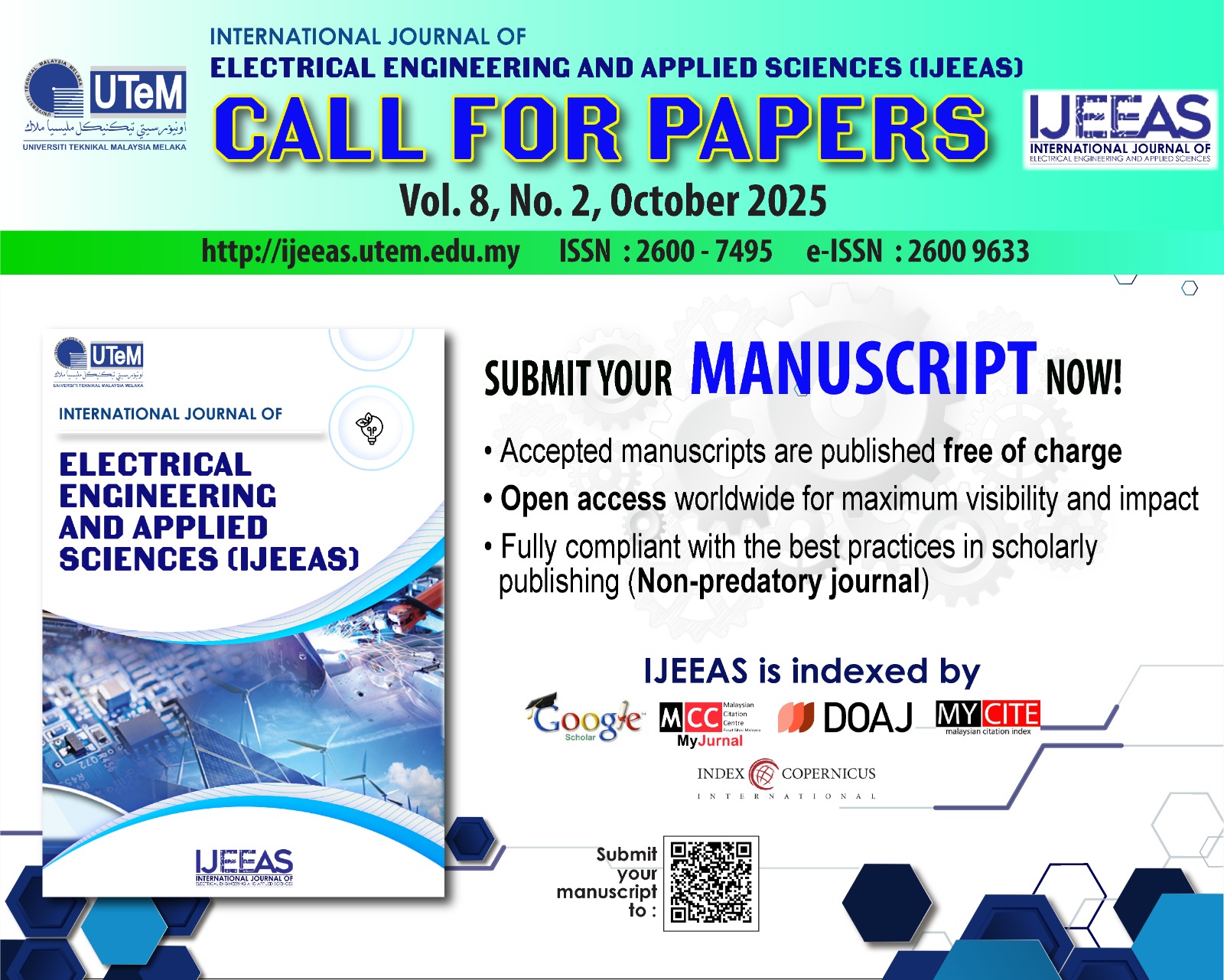The design model of solar powered automatic bell system integrated with smoke detection for educational institution application
Keywords:
Solar energy, automatic bell system, smoke detection, safety, schoolAbstract
The work presents a design model of renewable energy based automatic bell system integrated with smoke detection, which uses solar energy as main power source. This design model is highly recommended to be installed in schools and learning institution, particularly in rural area as the power supply is the main constraint. In this work, the design which incorporates of the bell system, smoke detection and LCD display are presented using design software and their function is initialized using a programming language. The system model is designed to trigger bell at prescribed interval hours during school sessions. On the other hand, the design also includes a smoke sensor integrated with the bell system which triggers the bell during fire break out. The results outcome of this system is discussed accordingly. This design model is expected to save costs and enhance efficiency in power utilization using renewable energy as the main source of energy. In addition, the safety feature of the smoke detector is expected to safeguard school or institution from losses and damages caused by fire outbreak.
Downloads
References
Siddharth Singh, How long will fossil fuels last? Business Standard, September 23, 2015. [Accessed on 6 June 2018]
Available from World Wide Web:
https://www.business-standard.com/article/punditry/how-long-will- fossil-fuels-last-115092201397_1.html
International Energy Agency (IEA). Beyond Kyoto: Energy dynamics and climate stabilization. Paris: OECD/IEA; 2002.S. Bilgen et al. / Renewable and Sustainable Energy Reviews 12 (2008) 372–396 393
Lee R. Environmental impacts of energy use. In: Bent R, Orr L, Baker R, editors. Energy: science, policy, and the pursuit of sustainability. Washington: Island Press; 2002. p. 77.
Wolfson R, Schneider S.H. Understanding climate science. In: Climate change policy: a survey. Washington: Island Press; 2002. p. 3–52.
Ohize,H.O., Onwuka, E.N. and Ibrahim, A. Design of Microcontroller-Based Automatic School Bell, AU J.T. 15(2): 121-128 (Oct. 2011)
Uddin,S.N. , Nawaz, M.O. Raj , T.K and Rasool, S.M, International Journal of Advanced Research in Electrical, Electronics and Instrumentation Engineering, Automatic School Bell with User defined Time Schedule, Vol. 6, Issue 2, February 2017
Agarwal, T. Microcontroller Based Project on Automatic Bell System for Schools, [Accessed on 6 June 2018]
Available from World Wide Web:
https://www.elprocus.com/microcontroller-based-project-on- automatic-school-bell-timer/
Automatic Bell System for Institutions, Edgefixkits & Solution [Accessed on 6 June 2018]
Available from World Wide Web:
http://www.edgefxkits.com/blog/automatic-bell-system-institutions- applications/
Choudhary,S., Shrikant and Sharma , P. Automatic college bell system, International Journal of scientific research and management (IJSRM), Volume 2, Issue 3, Page 668-673 ,2014
Downloads
Published
How to Cite
Issue
Section
License
Authors who publish with this journal agree to the following terms:
- Authors retain copyright and grant the journal right of first publication with the work simultaneously licensed under a Creative Commons Attribution License that allows others to share the work with an acknowledgement of the work's authorship and initial publication in this journal.
- Authors are able to enter into separate, additional contractual arrangements for the non-exclusive distribution of the journal's published version of the work (e.g., post it to an institutional repository or publish it in a book), with an acknowledgement of its initial publication in this journal.
- Authors are permitted and encouraged to post their work online (e.g., in institutional repositories or on their website) prior to and during the submission process, as it can lead to productive exchanges, as well as earlier and greater citation of published work (See The Effect of Open Access).







